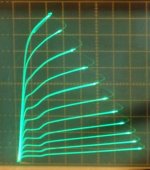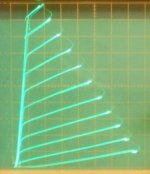At this point , wallet not-withstanding 😛 , I won't be buying any transformers . I have a pair of new Hammond 1650r's that I managed to buy in South Africa at a reduced price , I think because they were just lying in a stock room for so long - unwanted .

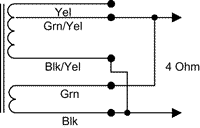
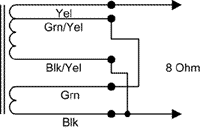
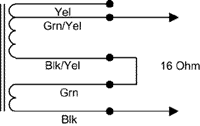
So - not the " easy to wire " 1650RA " new improved " version .
I guess it's a pity that bandwidth only starts at 30Hz , but this is what I have .
Question : Can I halve impedances and use 5K primary as 2.5k primary ; and 8 and 16 secondaries as 4 and 8 ?
And .... Any thoughts on above mentioned OPT's ?
Hammond Output Transformer 1650R
Designed for push-pull tube output circuits. Enclosed (shielded), 4 slot, above chassis Type "X" mounting. Frequency response 30 Hz. to 30 Khz. at full rated power (+/- 1 db max. - ref. 1 Khz) minimum. Insulated flexible leads 8" min. Typical applications - Push-Pull: triode, Ultra-Linear pentode, pentode and tetrode connected audio output. Due to the unique interleaving of the windings both secondary windings must be engaged to meet specifications.
1650R Audio Watts RMS 100, Primary Impedance 5,000 ct, Max. DC Per Side 318 ma., Secondary Impedance 4-8-16



So - not the " easy to wire " 1650RA " new improved " version .
I guess it's a pity that bandwidth only starts at 30Hz , but this is what I have .
Question : Can I halve impedances and use 5K primary as 2.5k primary ; and 8 and 16 secondaries as 4 and 8 ?
And .... Any thoughts on above mentioned OPT's ?
Last edited:
I better mention that there is one significant fly in the ointment of what I said. The low power output tubes I mentioned generally only take about 300 volts on the plate. But to get maximum drive out of the concertina requires about 450 volts. One would probably want that just for flexibility in output tubes and later experimentation. The Williamson used output tubes that could use the same 450 volts applied to the concertina.
This means one has to have a separate voltage supply for the two stages. As you'll learn there are compromises in everything and one just has to weigh which ones you can live with. I've experimented with using a 385 volt rms (One Electron) center tapped power transformer in PSUD2 (A very good freely available downloadable tool that everyone should use) and made it to work. The 385vrms main supply ends up about 325vdc with dedicated full wave solid state rectifiers going into a choke input filter. You also need to feed the 385vrms into separate dedicated full wave ss rectifiers that feeds a capacitor input filter. That gives about 450 to 500vdc output. They will work more or less independently off of one ac voltage input.
These are things one has to know about beforehand because you can't just drop in a new topology and expect it to work like the Williamson. Only you can decide if you are ready to go there or if its too much at this point in your learning.
The more I think about it , the more I like this topology for drive :


From here : Triodedick MonoBill Classic zelfbouw project - Audio Creative
I think ( but I'm not absolutely sure ) that the 6N6P's offer more current drive than high mu double triodes ( typically 12AX7 ) .
Last edited:
It's a modified Williamson as mentioned earlier, the Russian 6N6P can deliver a lot more current than the 12AX7/ECC83. When running in triode mode, the amplifier is good for 30W according to the designer, so if you parallel the KT88's, that means Po of 60W, which should be easily handled by the Hammond that you have.
It's a modified Williamson as mentioned earlier, the Russian 6N6P can deliver a lot more current than the 12AX7/ECC83. When running in triode mode, the amplifier is good for 30W according to the designer, so if you parallel the KT88's, that means Po of 60W, which should be easily handled by the Hammond that you have.
Thanks for confirming jazbo8 .
Would you mind answering my question re Hammond's in the previous post please ?
ie Question : Can I halve impedances and use 5K primary as 2.5k primary ; and 8 and 16 secondaries as 4 and 8 ?
Last edited:
Only the genuine EL34 when 'strapped' will behave as a triode.Is it a triode connection that you like ? It's been a couple of times now I've come across that preference . Is it a simpler , purer sound ? More than enough power for domestic use already ? Or maybe it's not triode connection at all ? 😀
Kinkless tetrodes (KT designator) or other Pentodes still have internal connections between screens.
From Decware on the subject:
In a pentode such as the EL34 where the screens are not tied together internally, it is possible to wire it as a "true triode". It is the only pentode I know of that is. The other ones have internal connections on the screens that can't be changed so you end up with a "Pseudo triode" as I've heard it called. The "Pseudo" triode will retain some of it's pentode characteristics and be higher in efficiency generating slightly more power from the same bottom line. On the EL34 you can wire it both ways and observe the differences. In fact we've got a product coming out soon that has this feature built in allowing you to use your choice of two sockets, one wired in true triode and one in a form of "pseudo triode.
Sent from my HP 10 G2 Tablet using Tapatalk
I think so, but only actual tests once you breadbord or build the amp can confirm it.Can I halve impedances and use 5K primary as 2.5k primary ; and 8 and 16 secondaries as 4 and 8?
Only the genuine EL34 when 'strapped' will behave as a triode.
Kinkless tetrodes (KT designator) or other Pentodes still have internal connections between screens.
From Decware on the subject:
In a pentode such as the EL34 where the screens are not tied together internally, it is possible to wire it as a "true triode". It is the only pentode I know of that is. The other ones have internal connections on the screens that can't be changed so you end up with a "Pseudo triode" as I've heard it called. The "Pseudo" triode will retain some of it's pentode characteristics and be higher in efficiency generating slightly more power from the same bottom line. On the EL34 you can wire it both ways and observe the differences. In fact we've got a product coming out soon that has this feature built in allowing you to use your choice of two sockets, one wired in true triode and one in a form of "pseudo triode.
The only true pentode that I have is Russian GU-50 , the high voltage just freaks me out a little , I don't really want to go over 500V for B+ . Thoughts on 4 of these in place of the KT88's on above mentioned circuit ?
I also can't seem to find anything on plate to plate impedance , or just plain internal impedance in any datasheets I find , anybody know ?
A bit of searching will yield enough info on GU-50 amplifiers; it is a good alternative for KT88.
Yes, you can halve impedances.
With parallel output tubes your OPT will have better LF bandwidth; don't bother with that 30 Hz, it will be lower.
Yes, you can halve impedances.
With parallel output tubes your OPT will have better LF bandwidth; don't bother with that 30 Hz, it will be lower.
A bit of searching will yield enough info on GU-50 amplifiers; it is a good alternative for KT88.
Yes, you can halve impedances.
With parallel output tubes your OPT will have better LF bandwidth; don't bother with that 30 Hz, it will be lower.
Thank you Pieter !
I have my doubts about any Pentode employed in PP sounding enough different (or better) than your existing amps.The only true pentode that I have is Russian GU-50 , the high voltage just freaks me out a little , I don't really want to go over 500V for B+ . Thoughts on 4 of these in place of the KT88's on above mentioned circuit ?
I also can't seem to find anything on plate to plate impedance , or just plain internal impedance in any datasheets I find , anybody know ?
Having heard genuine triodes in comparison to KT output tubes that are emulating triodes, have my doubts about what can be achieved in this approach.😚
My favorite tube amps use simpler layouts, and fewer parts.
I would never claim it can't be done, as the MR200 and SAC Glowmaster amps have shown me.
http://www.ramlabs-musicreference.com
http://www.sacthailand.com
I've heard both and would gladly live with them. They have broad application to lots of speaker loads, per your original specs. Achieving this with an intermediate skill set is ambitious.
I think that your concerns about the high voltages supplies are warranted. The robust power supplies required to handle the current such tubes pass are not inexpensive to build, either.
It bears mentioning that the latest version of the SAC amp using high power Triodes is now single ended, mainly to keep the amp down to a single chassis.
In my opinion, having owned a Hafler-Keroes amp with four Pentodes in each channel and a simpler PP triode amp with antique Type 50 output tubes I suspect what many of us like in vacuum tube amps is a judicious application of global negative feedback. (By that, I mean less than modern designs employ.)
I've heard antique amps that sound more lively, but measure poorly for distortion components and noise as compared to modern amps like the AR reference series.
The Audio Research Amps built today are measurably and arguably better at reproducing input waveforms at the test bench, but leave me disengaged when listening through them.
I suspect that feedback is like many solutions to complex problems like music playback; a powerful tool that creates minor problems in solving others.
I wonder if you might experiment with your existing gear, reducing the amount of global feedback would be a less expensive, and more immediate way to redress what you feel to be missing?
.
It's got to rain, sometime.
Jim
Westport, MA
USA
http://www.pastisch.se/tubes/gu50.htm
Sent from my HP 10 G2 Tablet using Tapatalk

source : http://www.diyaudio.com/forums/tubes-valves/258516-gu50-pp-possible-iron.html#post3977697
Hmmm ... 350V on anodes , -50V bias seems to be good operating point , Anode to G2 with 1k resistor and cathode connected to G3 . Does my logic seem right ?
Looks like a good tube , but prices online seem ridiculously high , for me anyway - specs seem to be similar to GU-50( GY-50) .This way with an Raa=3k5 you get no more then 10W out of a PP.
If you want power without too much drive needed, look at the EL156.
They are made today with an octal base.
Mona
Last edited:
I have my doubts about any Pentode employed in PP sounding enough different (or better) than your existing amps.
Having heard genuine triodes in comparison to KT output tubes that are emulating triodes, have my doubts about what can be achieved in this approach.😚
My favorite tube amps use simpler layouts, and fewer parts.
I would never claim it can't be done, as the MR200 and SAC Glowmaster amps have shown me.
Music Reference | RAM Tubeworks
SACThailand
I've heard both and would gladly live with them. They have broad application to lots of speaker loads, per your original specs. Achieving this with an intermediate skill set is ambitious.
Lovely looking equipment Jim - I checked out the Stereophile review of the MR-200 too . Hopefully I can get to hear one some day .
The Silk OPT seem to be not badly priced either .
I think that your concerns about the high voltages supplies are warranted. The robust power supplies required to handle the current such tubes pass are not inexpensive to build, either.
It bears mentioning that the latest version of the SAC amp using high power Triodes is now single ended, mainly to keep the amp down to a single chassis.
In my opinion, having owned a Hafler-Keroes amp with four Pentodes in each channel and a simpler PP triode amp with antique Type 50 output tubes I suspect what many of us like in vacuum tube amps is a judicious application of global negative feedback. (By that, I mean less than modern designs employ.)
I've heard antique amps that sound more lively, but measure poorly for distortion components and noise as compared to modern amps like the AR reference series.
The Audio Research Amps built today are measurably and arguably better at reproducing input waveforms at the test bench, but leave me disengaged when listening through them.
I suspect that feedback is like many solutions to complex problems like music playback; a powerful tool that creates minor problems in solving others.
I hear you about judicious use of GNFB , I wonder if one could make this adjustable ( between , say , 3 and 18dB ) ?
I wonder if you might experiment with your existing gear, reducing the amount of global feedback would be a less expensive, and more immediate way to redress what you feel to be missing?
.
It's got to rain, sometime.
Jim
Westport, MA
USA
GU50 single end
The Byrith modified 5-20 or 4-30/40 I wouldn't touch , it's just so good , and beautifully built circuit with only the best components ( which I cannot afford to play with ) .
The EL821 PP just works so well , and was built by legendary SA valve man Karel Mars , that I'd rather leave that alone .MarsTubeAudio - Home
In fact , if people are looking for affordable kits , Mr. Mars might just be the way to go , priced for the el-cheapo SA market , and would probably be cheaper than most offerings incl, shipping all the way from SA . OPT's he winds himself , another one of the people who started with valves when they were kids , 🙂 .
The Gunter Steinhart TVP50 E . I will restore to original to preserve Gunter's legacy ( albeit non-existant as of yet ) .
The Jonathan Noble IS 300B , probably should also be restored to , or changed to something that works well , I have considered stripping it for the iron , but haven't the heart . I should see if I can somehow get hold of Jonathan Noble ( he moved from SA to the UK some years ago ) and see what his plans with amp were . It certainly is quite musical , just noisy too , that disappears when the music is playing .
I think I'd rather start something fresh , and play with that , besides , I like the idea of bandwidth increasing with plate to plate load decreasing . The sound of well defined bass in a valve amp is what I'm after . A tall order , I guess , but hopefully possible .
The 6v6 is probably the kind of sound you're looking for in that case. It's ballsy and very dynamically good in the bass, especially without too much NFB. Really good for rock and blues. But then you're back to a low power tube that is limited to approx 300 volts on the plate. These are all things you just will have to weigh against each other. You change one thing and it will affect another. Sometimes good sound requires a little more complication in one area in exchange for less complication in another. This is where you decide which area of more complication is not hurting the sound (just your pocketbook).There are no free lunches.
6V6?
Rated 115 mA maximum cathode current. It will take a whole bank of these to drive a difficult speaker load.
There is the 6JC5/6JB5 tube which has similar specs to the 6V6, but rated 19 Watts (6JC5) and 260 mA peak cathode current. Curves are different however, more like a 6L6. Someone did build an amp with this tube once on DiyAudio and liked it. Compare with:
(6L6: 205 mA peak with +300 Vg2)
(KT88 230 mA peak with +300 Vg2)
(KT120 250 mA peak with +225 Vg2)
(KT150 275 mA peak
http://frank.pocnet.net/sheets/135/6/6V6GTA.pdf
http://frank.pocnet.net/sheets/123/6/6JB5.pdf
Seems like you already have the amp you need though. Just use the Gunter Steinhart TVP50 E amp with the 4 Ohm output for difficult speakers. (6P45S/6KG6 1250 mA peak cathode current at +160 Vg2) If you can find out the OT primary impedance, you can easily calculate the peak speaker current it can drive on the 8 Ohm or 4 Ohm outputs.
http://frank.pocnet.net/sheets/084/6/6KG6.pdf
-
Rated 115 mA maximum cathode current. It will take a whole bank of these to drive a difficult speaker load.
There is the 6JC5/6JB5 tube which has similar specs to the 6V6, but rated 19 Watts (6JC5) and 260 mA peak cathode current. Curves are different however, more like a 6L6. Someone did build an amp with this tube once on DiyAudio and liked it. Compare with:
(6L6: 205 mA peak with +300 Vg2)
(KT88 230 mA peak with +300 Vg2)
(KT120 250 mA peak with +225 Vg2)
(KT150 275 mA peak
http://frank.pocnet.net/sheets/135/6/6V6GTA.pdf
http://frank.pocnet.net/sheets/123/6/6JB5.pdf
Seems like you already have the amp you need though. Just use the Gunter Steinhart TVP50 E amp with the 4 Ohm output for difficult speakers. (6P45S/6KG6 1250 mA peak cathode current at +160 Vg2) If you can find out the OT primary impedance, you can easily calculate the peak speaker current it can drive on the 8 Ohm or 4 Ohm outputs.
http://frank.pocnet.net/sheets/084/6/6KG6.pdf
-
Last edited:
I see the Gunter Steinhart TVP502 E amp is running psuedo-triode outputs, which may be running in class A mode with only +200V B+. That would severely restrict the peak current available from the tubes. (idle current restricted, due to tube power diss. limits)
I think the PL519 ( 40KG6 ) was designed to work at high mains voltage ~230V . Steinhart did make a TVP502 A . This one is the TVP502 E , I think it may be Class AB , unless the E indicates use of some silicon used in the design for current regulation .
Here is the right schematic , I think .
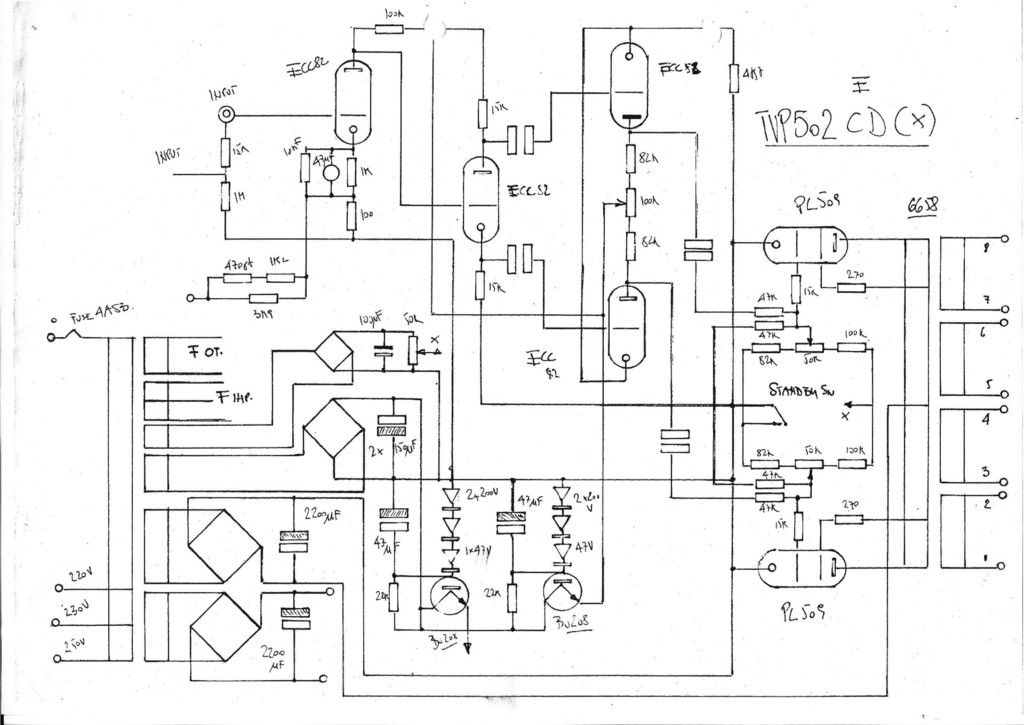
Here is the right schematic , I think .

Last edited:
Oh, I guess it is running in UL mode. The other schematic I saw looked like it had +200V B+ marked, that would make sense for keeping the screen voltage low enough for these low screen V tubes.
Any idea what OT primary Z it is using? At only 50 Watts out for such big tubes, it must be running with a higher Z primary than normal for such low B+. UL mode is known for losing its current drive capability too. (low screen V when the most current is needed, similar to triode)
You might want to experiment with some modifications to the amplifier. Change to pentode mode. Add some "local" N Fdbk around the output tubes in place of the UL Fdbk. (some resistors from PL519 plates back to driver tube plates, or to driver tube cathodes.) That would increase bass slam with increased current drive capability.
Going really wild, there is the new hybrid g2/g1 drive, or Crazy Drive, which linearizes the output tubes (in pentode mode) before any N Fdbk. You still want some local/global N Fdbk however to lower the output Z. Requires about 3X the drive voltage swing of normal grid 1 drive however (for the output tubes).
Pics:
1) 36LW6 in normal grid 1 drive
2) 36LW6 using new Crazy Drive
Any idea what OT primary Z it is using? At only 50 Watts out for such big tubes, it must be running with a higher Z primary than normal for such low B+. UL mode is known for losing its current drive capability too. (low screen V when the most current is needed, similar to triode)
You might want to experiment with some modifications to the amplifier. Change to pentode mode. Add some "local" N Fdbk around the output tubes in place of the UL Fdbk. (some resistors from PL519 plates back to driver tube plates, or to driver tube cathodes.) That would increase bass slam with increased current drive capability.
Going really wild, there is the new hybrid g2/g1 drive, or Crazy Drive, which linearizes the output tubes (in pentode mode) before any N Fdbk. You still want some local/global N Fdbk however to lower the output Z. Requires about 3X the drive voltage swing of normal grid 1 drive however (for the output tubes).
Pics:
1) 36LW6 in normal grid 1 drive
2) 36LW6 using new Crazy Drive
Attachments
Last edited:
- Status
- Not open for further replies.
- Home
- Amplifiers
- Tubes / Valves
- Classic 4 valve PPP circuits
